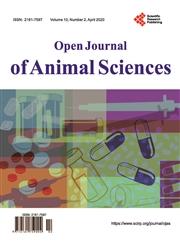Pond Substrate Type Affects Yellow Perch Fingerling Size at Harvest
引用次数: 1
Abstract
Fish size and harvest density generally exhibit a negative relationship in pond culture, but the influence that pond substrate type can have on this relationship is not well understood. To evaluate the influence of pond substrate type on yellow perch (Perca flavescens), harvest density (number/hectare) was linearly regressed against individual fingerling size (grams) for lined (n = 48) and earthen (n = 40) substrate ponds that were treated similarly in terms of organic fertilizer use and the number of days in the pond over 12 culture seasons at Blue Dog Lake State Hatchery, South Dakota, USA. Harvest density explained 45 and 39% of the variation in yellow perch size in lined and earthen-substrate ponds (all P P = 0.62); however, fingerling size was significantly larger in lined ponds regardless of density that varied from near 0 to 700,000 per hectare (y-intercept comparison, P < 0.01). At the same harvest density, lined ponds will tend to produce larger yellow perch fingerlings compared to earthen ponds when similar organic fertilizers are used.池塘基质类型对收获时黄鲈鱼鱼种大小的影响
在池塘养殖中,鱼类大小和收获密度通常呈负相关,但池塘基质类型对这种关系的影响尚不清楚。为了评估池塘基质类型对黄鲈鱼(Perca flavescens)的影响,在蓝狗湖州立孵化场的12个培养季节中,对内衬(n=48)和土底(n=40)池塘的收获密度(数量/公顷)与个体鱼种大小(克)进行线性回归,美国南达科他州。收获密度解释了有内衬和土底池塘中黄鲈鱼大小变化的45%和39%(均P=0.62);然而,无论密度在每公顷0至700000之间,有内衬的池塘中的鱼种数量都明显更大(y截距比较,P<0.01)。在相同的收获密度下,与使用类似有机肥料的土塘相比,有内衬池塘往往会产生更大的黄鲈鱼鱼种。
本文章由计算机程序翻译,如有差异,请以英文原文为准。
求助全文
约1分钟内获得全文
求助全文

 求助内容:
求助内容: 应助结果提醒方式:
应助结果提醒方式:


